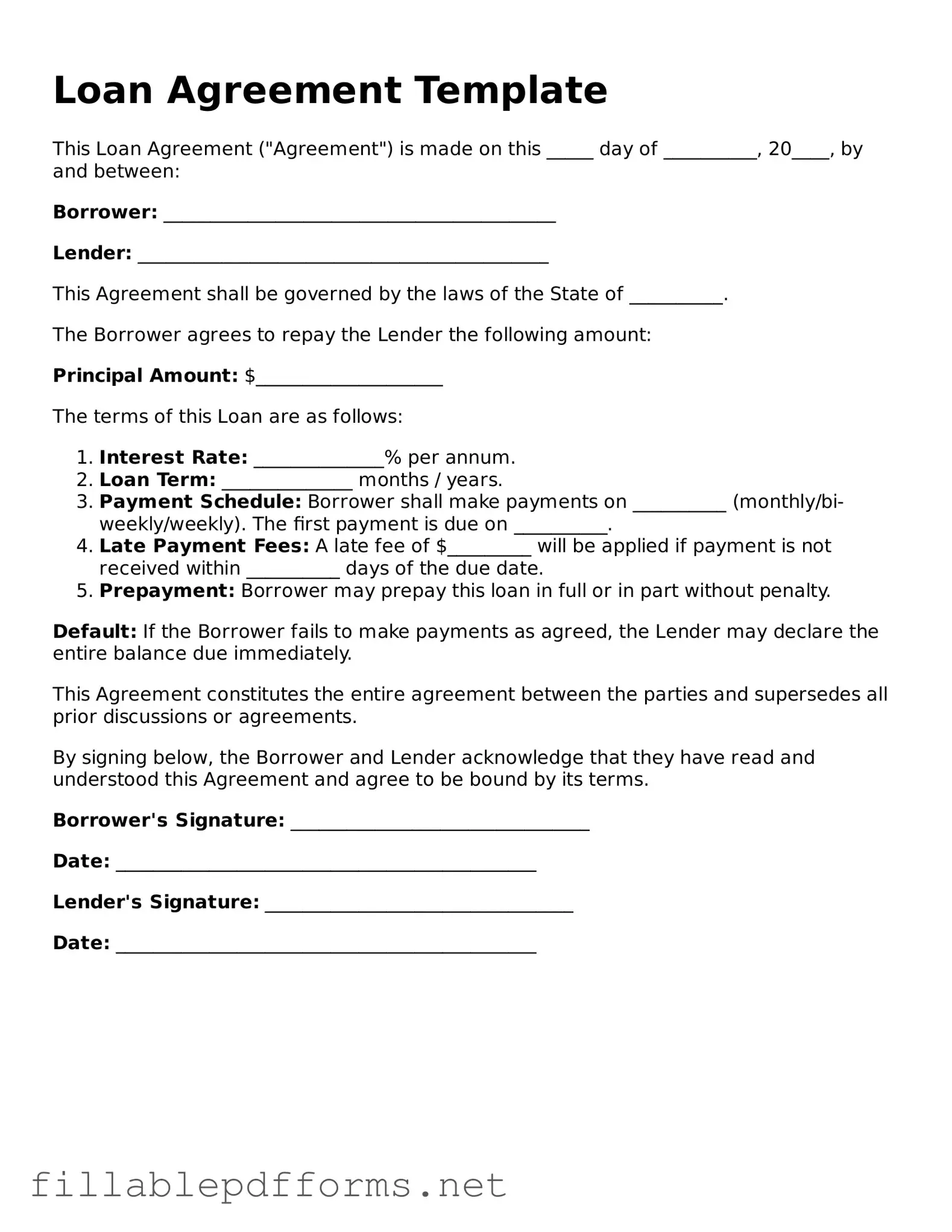Blank Loan Agreement Template
A Loan Agreement form is a legal document that outlines the terms and conditions of a loan between a lender and a borrower. This form specifies the amount borrowed, the interest rate, repayment schedule, and any collateral involved. Understanding this document is crucial for both parties to ensure clarity and protect their rights.
Launch Editor Here
